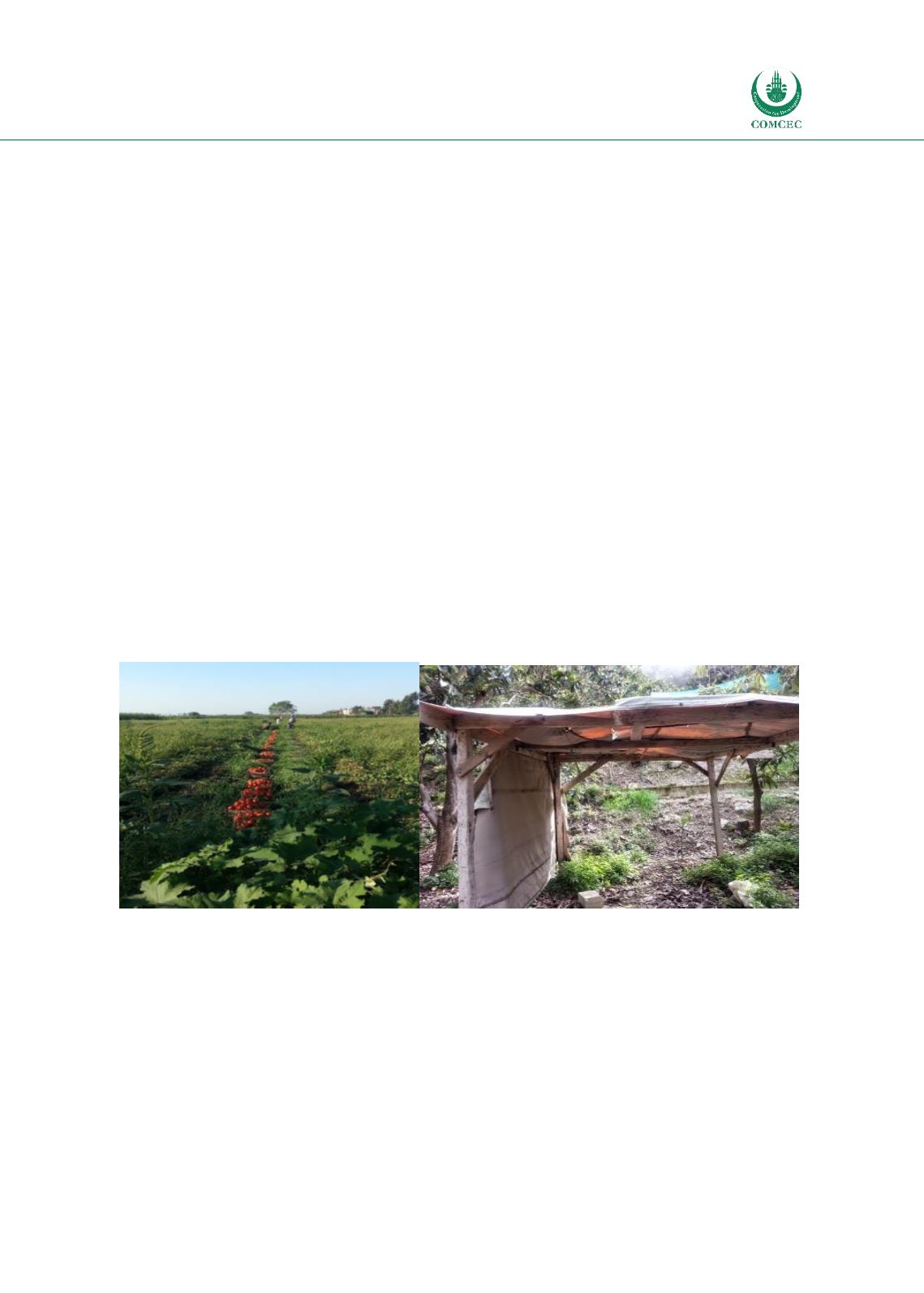

Reducing On-Farm Food Losses
In the OIC Member Countries
75
This year the new Food Security and Agribusiness Support (FAS) program is being initiated in
Egypt. This is a five-year, $23-million, USAID-funded program implemented in Egypt, and it will
include on farm and postharvest training activities.
3.5.5. Lessons Learned from the Case Study
Tomatoes produced in Egypt are exposed to too much direct sun, and the harvesting practices
cause a lot of damage to the plants and fruits. Recommendations to reduce on-farm losses for
tomatoes and general recommendations for fruits and vegetable crops include:
Pest management: Improve control of white flies (virus vector) and tomato leaf miner.
End Rot. Calcium should be applied to the soil at intervals, irrigation should be managed
properly.
Protection from sunburn: Provide filtered shade, such as shade cloth, to reduce sunburn
damage and lower field temperature, which could increase fruit set.
Improved harvesting: Harvest at proper maturity, and wait for color break to ensure
fruit is fully mature; flavor is improved if red color is allowed to develop on the vine.
Gentle harvesting: This is important to reduce damage for all fruit and vegetable crops.
Improved containers: Use liners for palm rib crates, smooth the inside of the crates with
sand-paper, and use reusable plastic vented crates when possible.
Temperature management: Provide shade for the crops after harvesting and before
transport, especially when temperatures are above 25 C.
Figure 3.14: Post-Harvest Crates Remain Uncovered; Shaded Areas are Recommended
Photos Source: On-Farm Visits
















